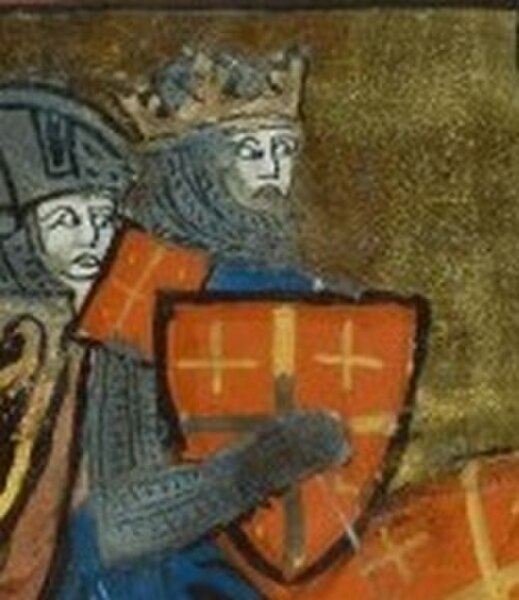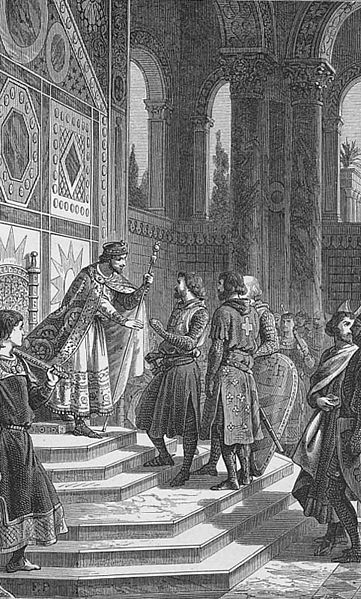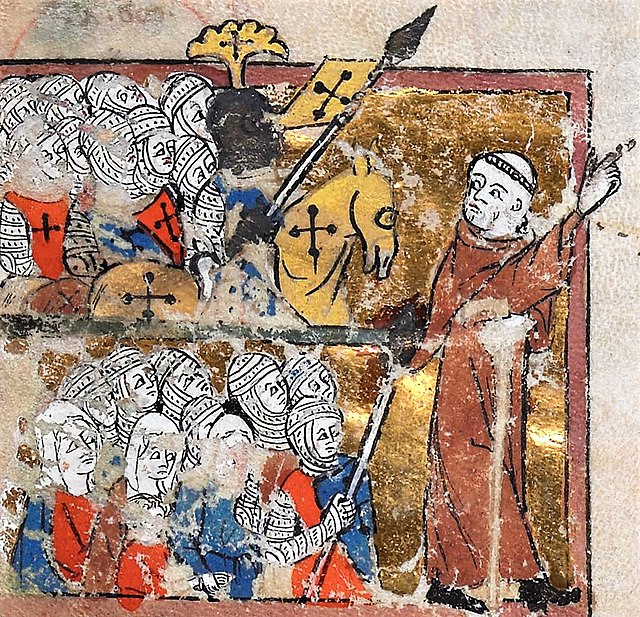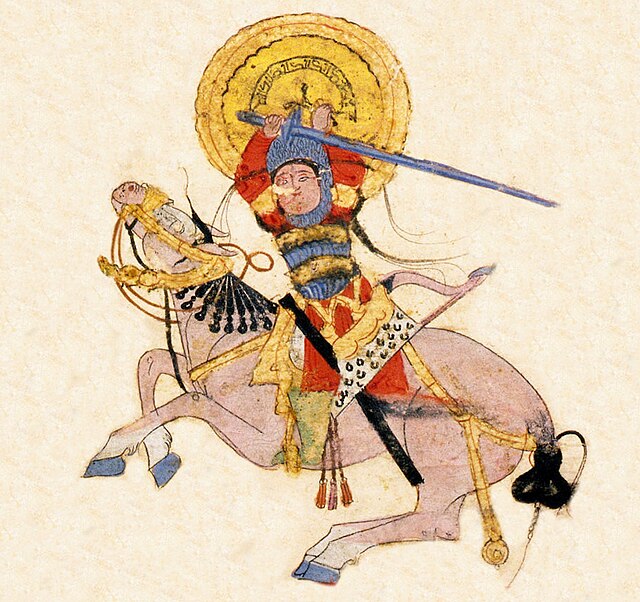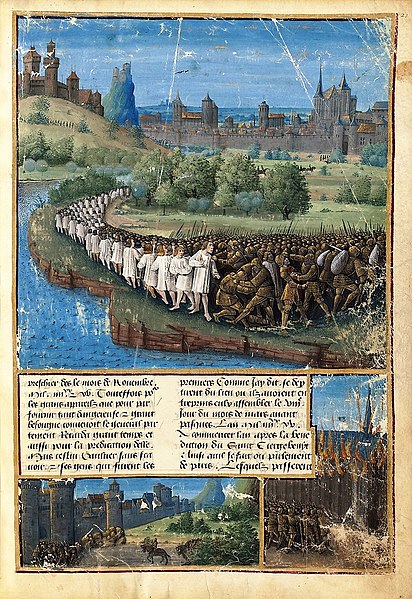Godfrey of Bouillon was a preeminent leader of the First Crusade, and the first ruler of the Kingdom of Jerusalem from 1099 to 1100. Although initially reluctant to take the title of king, he agreed to rule as prince (princeps) under the title Advocatus Sancti Sepulchri, or Advocate of the Holy Sepulchre.
Godfrey of Bouillon, from the Roman de Godefroy de Bouillon by Maître du Roman de Fauvel, c. 1330
The "sword of Godfrey of Bouillon" displayed at the Church of the Holy Sepulchre in Jerusalem since 1808 (1854 photograph)
Godfrey with his brothers Eustace and Baldwin meeting with Byzantine emperor Alexios I Komnenos
Godfrey of Bouillon being created the Lord of the city. From the Histoire d'Outremer by William of Tyre, detail of an historiated initial S, in a British Library Manuscript in the Yates Thompson Collection (No. 12, fol. 46), 13th century.
The First Crusade (1096–1099) was the first of a series of religious wars, or Crusades, initiated, supported and at times directed by the Latin Church in the middle ages. The objective was the recovery of the Holy Land from Islamic rule. While Jerusalem had been under Muslim rule for hundreds of years, by the 11th century the Seljuk takeover of the region threatened local Christian populations, pilgrimages from the West, and the Byzantine Empire itself. The earliest initiative for the First Crusade began in 1095 when Byzantine emperor Alexios I Komnenos requested military support from the Council of Piacenza in the empire's conflict with the Seljuk-led Turks. This was followed later in the year by the Council of Clermont, during which Pope Urban II supported the Byzantine request for military assistance and also urged faithful Christians to undertake an armed pilgrimage to Jerusalem.
Miniature of Peter the Hermit leading the People's Crusade (Egerton 1500, Avignon, 14th-century)
Anatolian Seljuk horseman, in Varka and Golshah, mid-13th century miniature (detail), Konya, Sultanate of Rum.
Pope Urban II at the Council of Clermont. Illustration from a copy of Sébastien Mamerot's Livre des Passages d'Outremer (Jean Colombe, c. 1472–75, BNF Fr. 5594)
An illustration showing the defeat of the People's Crusade, from Sébastien Mamerot's Livre des Passages d'Outre-mer (Jean Colombe, c. 1472–75, BNF Fr. 5594)

